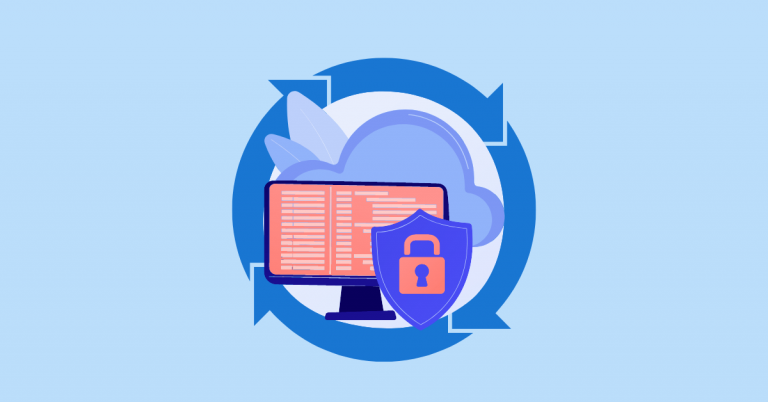
Introduction
In today’s digital age, social media platforms are integral to our daily lives, connecting us with friends, family, and the world. However, the convenience of social media comes with significant privacy risks. Protecting your privacy on social media is crucial to safeguarding your personal information from misuse. This article provides a comprehensive guide on how to protect your privacy on social media.
1. Understand Privacy Settings

Every social media platform offers privacy settings that allow users to control who can see their information. Familiarize yourself with these settings and configure them to enhance your privacy.
- Profile Visibility: Set your profile visibility to “Friends” to limit who can see your posts and personal information.
- Friend Requests: Limit who can send you friend requests to avoid connections with unknown individuals.
- Timeline and Tagging: Control who can post on your timeline and who can see posts you’re tagged in.
- Protect Your Tweets: Enable the “Protect your Tweets” option to make your tweets visible only to your followers.
- Direct Messages: Restrict who can send you direct messages to people you follow.
- Private Account: Set your account to private so that only approved followers can see your posts.
- Story Privacy: Customize your story settings to control who can view and reply to your stories.
2. Be Cautious with Personal Information

Avoid sharing sensitive personal information on social media platforms. This includes your home address, phone number, and financial information. Be mindful of what you post, as even seemingly innocuous information can be used to piece together your identity.
3. Use Strong and Unique Passwords

Create strong, unique passwords for each of your social media accounts. Use a combination of letters, numbers, and special characters. Avoid using easily guessable information such as birthdays or common words. Consider using a password manager to keep track of your passwords securely.
4. Enable Two-Factor Authentication

Two-factor authentication (2FA) adds an extra layer of security to your accounts. It requires not only a password but also a second form of verification, such as a code sent to your phone. Enabling 2FA makes it significantly harder for unauthorized users to access your accounts.
5. Be Wary of Third-Party Apps

Many social media platforms allow third-party apps to access your account. Before granting access, review the permissions the app requests and ensure it’s from a reputable source. Regularly audit and remove any apps you no longer use or trust.
6. Think Before You Share

Before posting anything on social media, consider how it might be perceived and who could see it. Avoid sharing information that could be used to harm you or others. Be particularly cautious with photos and videos that reveal personal details.
7. Monitor Your Accounts Regularly

Regularly review your social media accounts for any suspicious activity. Check for unfamiliar login attempts, unexpected posts, or messages. If you notice anything unusual, change your password immediately and review your account security settings.
8. Limit Location Sharing

Sharing your location on social media can pose significant privacy risks. Disable location services for social media apps unless absolutely necessary. Avoid posting your current location or geotagging your photos, as this can reveal your whereabouts to strangers.
9. Educate Yourself About Privacy Policies

Stay informed about the privacy policies of the social media platforms you use. Understand what data they collect, how it’s used, and with whom it’s shared. Regularly review these policies, as they can change over time.
10. Be Skeptical of Phishing Attempts

Phishing attacks often target social media users by tricking them into revealing their login credentials or personal information. Be cautious of messages, emails, or links that ask for sensitive information. Verify the legitimacy of any request before responding.
FAQs on Protecting Your Privacy on Social Media
1. Why is it important to protect my privacy on social media?
Protecting your privacy on social media is crucial to prevent identity theft, protect personal information from being misused, and safeguard against cyberbullying or stalking. It helps maintain your personal security and ensures that your data is not exploited by malicious actors.
2. How do I set my social media accounts to private?
Most social media platforms offer options to set your account to private:
- Facebook: Go to Settings > Privacy, and adjust who can see your posts and profile information.
- Twitter: Go to Settings and Privacy > Privacy and Safety, and enable the “Protect your Tweets” option.
- Instagram: Go to Settings > Privacy > Account Privacy, and switch to a private account.
3. What makes a strong password for social media accounts?
A strong password should:
- Be at least 12 characters long.
- Include a mix of uppercase and lowercase letters, numbers, and special characters.
- Avoid using easily guessable information like birthdays, names, or common words.
- Be unique to each account to prevent a single breach from compromising multiple accounts.
4. What is two-factor authentication and how do I enable it?
Two-factor authentication (2FA) adds an extra layer of security by requiring a second form of verification in addition to your password. To enable it:
- Facebook: Go to Settings > Security and Login > Two-Factor Authentication.
- Twitter: Go to Settings and Privacy > Security and account access > Security > Two-factor authentication.
- Instagram: Go to Settings > Security > Two-Factor Authentication.
5. How can I limit the information third-party apps access on my social media accounts?
To manage third-party app access:
- Facebook: Go to Settings > Apps and Websites, and review the apps that have access to your account. Remove any that you no longer use or trust.
- Twitter: Go to Settings and Privacy > Security and account access > Apps and sessions.
- Instagram: Go to Settings > Security > Apps and Websites.
6. How do I identify and avoid phishing attempts on social media?
Phishing attempts often involve fake messages or emails that appear to come from legitimate sources. To avoid them:
- Be skeptical of unsolicited messages asking for personal information or login credentials.
- Check the sender’s email address or social media profile for authenticity.
- Avoid clicking on suspicious links and verify any requests for information directly with the source.
7. What should I do if I notice suspicious activity on my social media account?
If you notice unusual activity on your account:
- Change your password immediately.
- Review your account’s recent activity and log out of any unfamiliar devices.
- Enable two-factor authentication if not already active.
- Contact the platform’s support for further assistance.
8. How can I control who sees my posts on social media?
Most social media platforms allow you to customize who can see your posts:
- Facebook: Use the audience selector tool when creating a post to choose between Public, Friends, or specific lists.
- Twitter: With a protected account, only your followers can see your tweets.
- Instagram: With a private account, only approved followers can see your posts.
9. How often should I review and update my privacy settings?
It’s a good practice to review and update your privacy settings at least once every few months or whenever there is a significant update to the platform. Regularly checking ensures that your settings remain optimal for your privacy needs.
10. Can social media platforms change their privacy policies without notice?
While most platforms notify users of significant changes to their privacy policies, it’s important to stay proactive. Regularly review the privacy policies of the platforms you use to stay informed about how your data is being handled and any new features that may affect your privacy.
Conclusion
Protecting your privacy on social media requires vigilance and proactive measures. By understanding and utilizing privacy settings, being cautious with personal information, using strong passwords, enabling two-factor authentication, and being mindful of what you share, you can significantly enhance your online privacy. Stay informed about privacy policies and be wary of phishing attempts to further safeguard your social media accounts.




